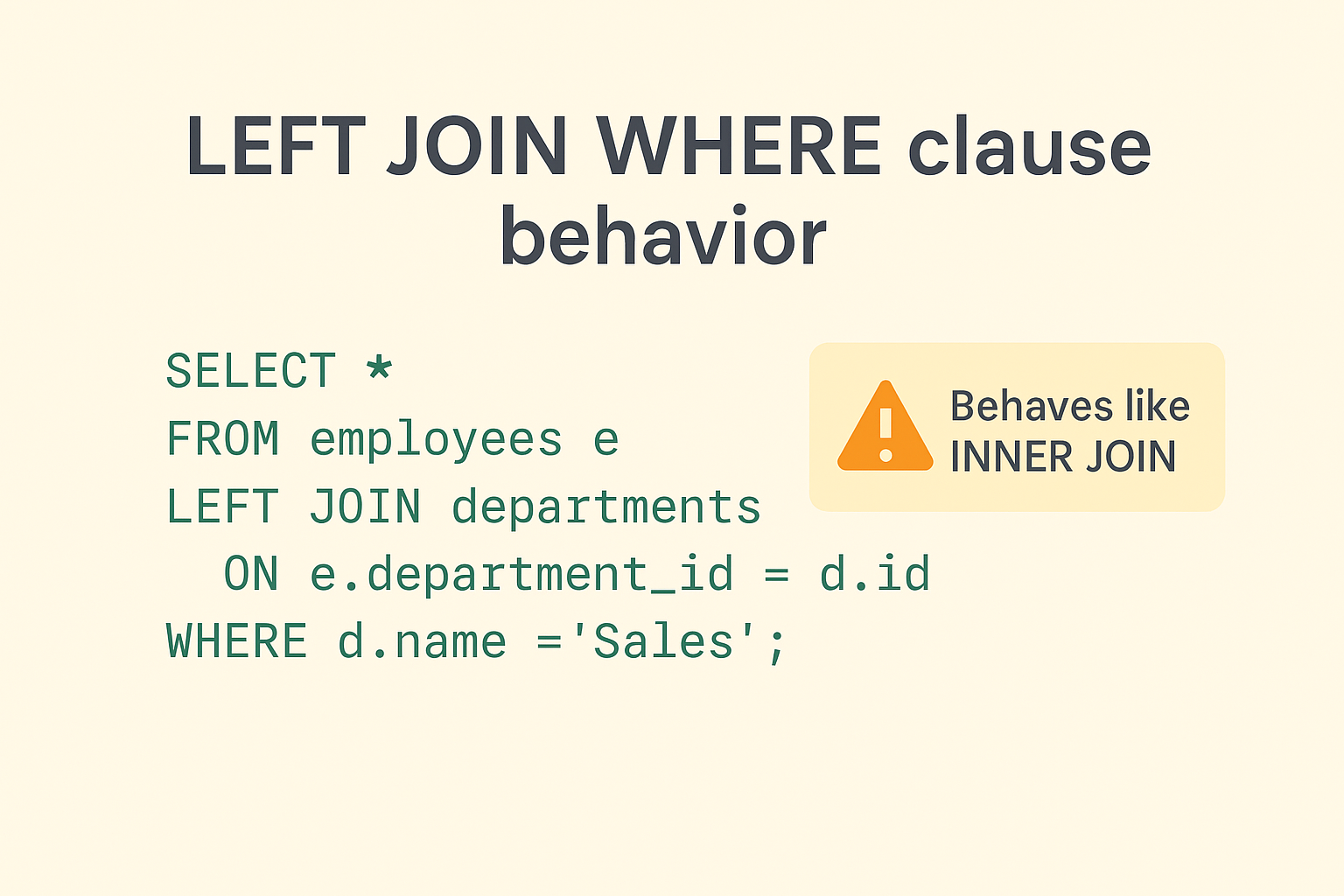When working with datasets containing UTC timestamps, especially across multiple U.S. locations, it’s important to convert UTC time to the correct local time based on time zone and daylight saving time (DST) rules.
Continue reading


When working with datasets containing UTC timestamps, especially across multiple U.S. locations, it’s important to convert UTC time to the correct local time based on time zone and daylight saving time (DST) rules.
Continue reading
TL;DR:
If you’re using a LEFT JOIN but filtering on the right table in the WHERE clause, you might unintentionally turn it into an INNER JOIN. Here’s why that happens, how to fix it, and how different databases handle it.

As data grows larger and more complex, optimizing for performance and scalability becomes essential. Partitioning is one of the most powerful strategies for managing big datasets efficiently. If you’ve come across a column like p_date in an SQL query, it often signals the use of table partitioning. But what does that mean, and how is it different from traditional databases?

In the dynamic world of business analytics, understanding trends over time is crucial. Power BI’s Time Intelligence Functions empower users to perform complex time-based calculations with ease, transforming raw data into actionable insights. This blog explores key Time Intelligence Functions, complete with examples and real-world applications.
Continue reading